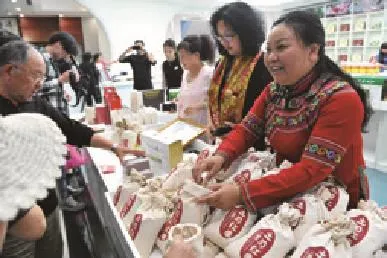Inspiring & Engaging
Inspiring & Engaging

AURELIEN FOUCAULT
Members of the China-France Young Leaders Program in Beijing on September 19.
Professionals from the two countries, selected for their expertise in different fields, exchanged ideas and experience under the theme Heritage and Innovation. The forum, which took place in Zhengzhou, Henan Province,and Beijing on September 15-19, was co-hosted by the Chinese People’s Institute of Foreign Affairs and the France China Foundation.
Information Sharing Guideline
The State Council, China’s cabinet,has issued a guideline on sharing government information.
Approved by Premier Li Keqiang, it aims to increase government credibility while improving administrative efficiency and government services.
Government information has been classified into three categories: information which can be shared unconditionally, conditionally, and information not meant for sharing. Information can be categorized as“un-shareable” only when backed by laws, regulations or national policies.
All government information systems should be linked to a national database, so that the public doesn’t have to submit the same information twice.
Sustainable Development Plan
China released its national plan for the implementation of the 2030 Agenda for Sustainable Development at UN headquarters in New York City on September 19.
The plan was unveiled by Premier Li Keqiang at a roundtable on the Sustainable Development Goals chaired by him.
The plan expounds China’s development policy and its efforts to help other developing countries so that the agenda is implemented globally.
The 2030 Agenda, endorsed and launched at the UN Summit for Sustainable Development last year,is a 15-year blueprint for eradicating poverty across the world.
In the past 15 years, China valued the UN Millennium Development Goals highly and took the lead in realizing them, making remarkable achievements in poverty reduction, health services and education, Li said.
In that period, China lifted over 400 million people out of poverty and reduced the mortality rate of children under 5 years old by two thirds and that of pregnant women by three fourths, he added.
Space Survival Experiment
China’s experiment in human survival for further space exploration is halfway to completion, according to the Astronaut Center of China (ACC).
Four volunteers embarked on a 180-day experiment in June,living in a sealed space capsule to show researchers how oxygen,water and food can be used and reused in space. Scientists are also examining the physiological changes and emotional fluctuations brought about by a hermetic environment.
The information obtained will be used in deep-space exploration.
The ACC has been using Mars time, where a day has 24 hours and 40 minutes, for the experiment since August 26.
The capsule also has 25 plant species, as part of a larger ecological treatment system. These are said to be growing well. The experiment will conclude on December 13.
Scientific Ocean Coring
China has set a new world record for extracting ocean bed core samples for scientific purposes, successfully drilling over 2,800 meters into a continental shelf in the Yellow Sea.
The Shandong No. 3 Exploration Institute of Geology and Mineral Resources said on September 20 that the drilling had helped verify the presence of oil and gas deposits.
The institute developed andestablished a drilling platform for the project in March 2015 in waters nearly 83 nautical miles east of Lianyungang in east China’s province of Jiangsu.
The platform is capable of holding up in gales of up to 150 km per hour.
The project has been sponsored by the China Geological Survey Bureau. The core sample can assist research on the geology of the continental shelf, an important belt linking continents with oceans.
Exam Reform
A pilot program will be started to promote reform of the high school entrance exam, according to a guideline issued by the Ministry of Education (MOE) on September 20.
High schools should recruit students based on both their exam scores and a comprehensive assessment of their qualities. The pilot program will be implemented in 2017 first and expanded across the nation in 2020.
Zheng Fuzhi, a director with the Basic Education Division of the MOE,said high school enrollment will depend not only on exam scores, but also on students’ morality, mental and physical health, artistic tastes and social skills.
It will reduce the focus on memorizing and instead emphasize analytical and problem-solving skills to encourage students to innovate, Zheng said.
Innovation Plan
The State Council has issued a plan for transforming Beijing into a national scientific and technological innovation hub.
The goal is to make the hub a world leader in innovation, a growth driver for the economy, and a talent pool.
It is expected to become a powerful engine to boost the country’s innovation drive by 2030.
The plan stresses the key roles of north Beijing’s hi-tech zone,Zhongguancun, and neighboring Tianjin Municipality and Hebei Province in supporting the technology innovation hub drive.
It calls for enhanced fundamental research in cutting-edge technology, improved personnel training and government services as well as a better policy environment for innovation.
Technological innovation in pivotal sectors should be strengthened and should benefit more people, and the capital should become more open to international resources, it adds.
Cyber Security Expertise
China needs more cyber security specialists, according to a national cyber security awareness event held in Wuhan, capital of central China’s Hubei Province, on September 19.
China currently needs 700,000 cyber security specialists, and the requirement may rise to 1.4 million by 2020.
The National Cyber Security Awareness Week, sponsored by the China Cyberspace Administration,has been held annually since 2014 to engage and educate the public and the private sectors in cyber security through various initiatives.
About 15,000 information security majors graduate from Chinese higher learning institutions every year. The figure, however, is far from enough to satisfy the country’s growing need.
In July, the cyberspace administration, along with the ministries of education, science and technology, and industry and information technology, announced that cyber security education and training would become a national strategy.
In a country of 700 million Internet users, core information and cyber security technologies must be improved to suit the new environment.
Largest Telescope
The world’s largest radio telescope,China’s single-aperture spherical telescope, FAST, is now ready for use in the southwestern province of Guizhou.
Built to study distant galaxies and pulsars, the telescope, which overtook the Arecibo Observatory in Puerto Rico to become the world’s largest telescope, began receiving signals after its core part and receiver were installed.

XINHUA
Sea Drill
Chinese frigate Huangshan and the Russian Navy’s antisubmarine ship,
Admiral Tributs, take part in a China-Russia naval joint drill off south China’s Guangdong Province on September 16.

XINHUA
Splendid Tides
People watch the tide in the Qiantang River in Yanguan Township, Haining City, east China’s Zhejiang Province, on September 18.
The Qiantang tidal bore is an annual phenomenon and a natural wonder that starts around the middle of the month and reaches its climax on September 18.
RMB Clearing Service
The People’s Bank of China(PBOC), the central bank, announced on September 21 that it has authorized Bank of China’s(BOC’s) New York Branch to provide renminbi clearing services in the United States.
It is the first time China has set up a renminbi clearing bank in the world’s largest economy.
The decision was made according to a PBOC memorandum of cooperation signed with the U.S. Federal Reserve Board, according to a statement posted on the PBOC’s official website.
Chinese and U.S. officials endorsed a framework for facilitating renminbi trading and clearing in the United States for the first time during the Eighth China-U.S. Strategic and Economic Dialogue in Beijing in June.
The BOC New York Branch is the largest China-funded financial institution in the United States.
China has vigorously promoted global use of the renminbi as the world’s largest trading nation looks to lower transaction costs in international trade, which is primarily settled in U.S. dollars.
The IMF has decided to add the renminbi to its Special Drawing Rights (SDR) currency basket,making it one of the five reserve currencies fully endorsed by the 188-member organization.
The PBOC’s latest report showed that by the end of 2015,the renminbi had become the third most-used currency in crossborder trade and financing. It was in fifth place among all currencies for use in international payments and foreign exchange trading.
Port Acquisition
China’s sovereign wealth fund has secured a 20-percent share in the Port of Melbourne which sold for $7.2 billion in a 50-year lease.
The China Investment Corp.(CIC) Capital contributed $1.5 billion to the Lonsdale Consortium, which was confirmed on September 19 as the successful bidder for Australia’s busiest port.
CIC Capital’s involvement in the consortium marks China’s first investment in an Australian infrastructure asset since Treasurer Scott Morrison controversially blocked Chinese companies from buying a majority stake in New South Wales’(NSW) power network, Ausgrid.

XINHUA
Busy Dock
The container wharf of the Qingdao Port in Shandong Province takes on a busy workload on September 20.
From January to July, it had accomplished throughput of 10.45 million 20-foot equivalent units (TEUs) of containers, up 3.85 percent year on year and ranking fourth in China.
Tim Piper, who heads the Australian Industry Group, an employers’ organization in the state of Victoria, said that the decision reaffirmed that Australia is open to international investors.
“As far as I’m aware, this is the first major government infrastructure project that has been allowed since the Ausgrid decision in NSW,” Piper told News Corp Australia, one of Australia’s largest media companies,on September 20.
“While you can speculate as to why this has been allowed, one would assume, because there are a number of overseas investors in this project and no one has a majority position, that it probably made the Foreign Investment Review Board(FIRB) feel more comfortable with its decision,” he said.
The FIRB granted “conditional approval” to the sale of the port to the Lonsdale Consortium, though Morrison declined to disclose the conditions.
The sale represents the largest privatization of Victoria Stateowned assets since $18 billion worth of energy assets were sold in the 1990s. The price tag of $7.2 billion far exceeded the most optimistic estimates.
Most Valuable Brand
E-commerce powerhouse Taobao has overtaken Internet giant Tencent to become China’s most valuable brand, according to a report published on September 20.
Taobao’s brand value stood at 230 billion yuan ($34.48 billion),China Mobile’s brand was worth 227 billion yuan ($34.03 billion), and Baidu’s brand value was estimated at 218 billion yuan ($32.68 billion),the Shanghai-based Hurun Research Institute said in the report.
Last year’s champion, Tencent,fell to fifth position, with its brand value amounting to 210 billion yuan($31.48 billion), as its instant messaging service WeChat was counted independently this year.
WeChat, which has 700 millionusers, debuted in seventh place on the list, with a brand value of 132 billion yuan ($19.79 billion).
The combined value of the 200 brands on the report reached a record high of 4.6 trillion yuan ($689.51 billion), up 7 percent year on year. Of them, 139 saw their value grow,and 97 belong to private companies. The value of state-owned brands decreased about 3 percent on average,while that of private brands went up about 20 percent on average.
Financial and property sectors have the most brands on the list,but technology brands recorded the largest increases, with their average value rising about 59 percent. The rapid expansion of China’s technology industry in recent years contributed to the growth, according to the institute.
Steel Merger Plan
State-owned Baosteel has unveiled a plan to acquire the Wuhan Iron and Steel (Group) Corp. and thereby become the world’s second largest steelmaker after ArcelorMittal.
According to an announcement posted on the Shanghai Stock Exchange website on September 20, Baosteel will issue yuan-denominated A shares to all transferring shareholders of Wuhan Iron and Steel, also a large stateowned enterprise based in Hubei Province.
The restructuring plan still needs the approval of shareholders from both listed firms.
Last year, Wuhan Iron and Steel reported a loss of 7.5 billion yuan ($1.1 billion), and Baosteel’s profits shrank more than 80 percent to their lowest level in 18 years.
Crude steel production by Baosteel and Wuhan Iron and Steel amounted to 34.9 million and 25.8 million tons respectively last year. After the merger, Baosteel’s output will rank first in China, exceeding that of the HeSteel Group based in Hebei Province.
Trading of the two firms’ shares has been suspended since late June due to the planned restructuring.
China plans to cut its steel production capacity by 100 million tons to 150 million tons by 2020,according to a government plan unveiled in February.
Baosteel President Chen Derong said that the merger will coordinate various aspects of the businesses such as logistics and research and development.
Both companies produce and sell sheet steel used in auto manufacturing. Now, long-distance transportation can be avoided,thereby cutting costs, he said.
FDI and ODI
Foreign direct investment (FDI)into the Chinese mainland rose 5.7 percent year on year in August,compared with its 1.6-percent drop in July.
FDI hit 57.32 billion yuan ($8.76 billion) last month, according to figures from the Ministry of Commerce(MOFCOM).
The rebound came as a slew of data released on September 13 showed China’s economic activity was in better shape last month despite lingering downward pressure.
Fixed assets investment,industrial output and retail sales all accelerated in August, according to the National Bureau of Statistics.
The MOFCOM said that FDI in the first eight months of 2016 increased 4.5 percent year on year to $85.88 billion, up from 4.3 percent in the first seven months.
Chinese companies continued to make large investment in overseas markets during the first eight months of the year, according to the MOFCOM.
China’s non-financial outbound direct investment (ODI) surged 53.3 percent from a year ago to 775.12 billion yuan ($118.06 billion) in the January-August period, according to a statement posted on the ministry’s website. China’s Hong Kong, ASEAN members, EU nations, the United States, Russia and Japan received investments totaling $87.66 billion,or 74.2 percent of the total.
In August alone, China’s ODI rose 13.4 percent year on year to $15.31 billion.

XINHUA
Roof-Mounting Solar Panels
Workers check solar power generation equipment on the roof of a cottage in Mingyue Village of Changxing County, Zhejiang Province, on September 20.
So far, roughly 200 farmers’ households in the county have had their roofs installed with such equipment and more than 800 farmers’ households have applied for the installation.

XINHUA
Direct Selling
A saleswoman introduces organic agricultural products to visitors at a fair in Beijing on September 19.
The event showcases quality agricultural products from across China.
UNITED STATES

NHUA
FBI investigators inspect the site of a blast in New York City on September 18. The explosion, which occurred the day before, left 29 people wounded
JAPAN

XINHUA
Some 23,000 people rally on September 19 in Tokyo to protest against the controversial security laws enacted by Japan’s parliament one year ago, marking the nation’s departure from postwar pacifism
GERMANY

XINHUA
IAA Commercial Vehicles—a leading international trade fair for mobility, transportation and logistics—takes place in Hannover on September 22-29
KYRGYZSTAN

XINHUA
A joint anti-terror exercise by member states of the Shanghai Cooperation Organization, dubbed Peace Mission 2016, takes place in the country on September 18
BRAZIL

XINHUA
Athletes lower the Paralympic flag as the 2016 Paralympic Games ends with a colorful closing ceremony in Rio de Janeiro on September 18
GERMANY

XINHUA
People wearing traditional costumes take part in a parade on September 18 as part of the Oktoberfest beer festival in Munich

